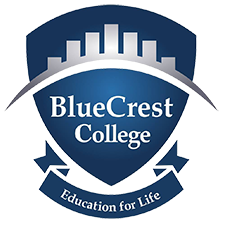
Are we all biased?
The psychologist says “yes.”
Imagine you are the hiring manager and there is a vacancy for a project manager. Assume there are two candidates for the interview, David and John, who are equally qualified, but David is five minutes late for the interview and John arrives on time.
Whom would you select?
John for his punctuality?
If yes, you have been a victim of a thinking error called cognitive bias.
What if John was punctual but not productive, and David was not punctual but productive?
If you are punctual, you will prefer others to be punctual, value punctuality, and overlook all other negative qualities in a person.
This is called the “Halo effect.”
Cognitive biases are psychological tendencies that can distort our perception of reality and lead us to make irrational decisions. These biases can have significant consequences in the workplace, leading to poor decision-making, conflicts, and decreased productivity.
Here are some common cognitive biases at work and strategies for debiasing them:
1. Anchoring bias:
This is the tendency to rely too heavily on the first piece of information we encounter when making a decision, even if it is not relevant or accurate.
Example:
For example, if a manager had a negative experience with an employee in the past and believed that the employee was not a strong performer, they might be more likely to focus on and remember instances where the employee makes mistakes or underperforms, even if the employee is actually performing well overall. This can lead to an unfair evaluation of the employee’s current performance, as the manager’s judgment is anchored to their past experiences with the employee.
On the other hand, if a manager had a positive experience with an employee in the past and believed that the employee was a strong performer, they might be more likely to overlook instances where the employee makes mistakes or underperforms and give them a more favorable evaluation. This can also lead to an unfair evaluation of the employee’s current performance, as the manager’s judgment is anchored to their past experiences with the employee.
In this scenario, the manager has to be aware of his biases and use critical thinking to reduce them.
2. Confirmation bias:
This is the tendency to seek out information that confirms our pre-existing beliefs and ignore information that challenges them.
Example:
Imagine that an employee at a company believes that the company’s new product is going to be a huge success. They are excited about the product and have a lot of confidence in its potential. As a result, they may seek out information confirming their belief in the product’s success, such as articles or reports highlighting the potential market demand for the product. They may also give more weight to positive feedback or data that supports their belief while downplaying or dismissing any negative feedback or data that suggests the product may not be as successful as they hoped.
In this case, the employee has to look for information from a variety of sources, including those that may challenge their pre-existing beliefs.
3. Halo effect:
This is the tendency to view someone or something in an overly positive light due to a single positive trait or characteristic.
Example:
A manager may have a positive impression of an employee based on their charisma, leading them to overlook their flaws or poor performance.
The manager has to evaluate people and situations objectively and consider multiple factors rather than relying on a single trait.
4. Framing effect:
This is the tendency to be influenced more by the way information is presented than by the content itself.
Example:
A team may be more likely to accept a proposal if it is presented in a positive frame, such as “This proposal will increase profits,” rather than a negative frame, such as “This proposal will reduce losses.”
To debunk this, it is important to consider the content of the information rather than the way it is presented.
5. Status quo bias:
This is the tendency to favor the current state of affairs and resist change, even if it would be beneficial.

Example:
A team may be resistant to implementing a new process because they are comfortable with the way things are currently being done, even if the new process would be more efficient.
The team leader has to sensitize the team about the potential benefits of change and encourage the team to actively seek out new ideas and approaches.
Cognitive biases can affect our critical thinking and make us make wrong decisions, and by using appropriate debiasing strategies, we can improve our decision-making and increase productivity in the workplace.





